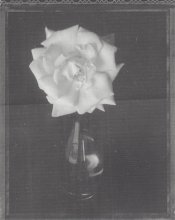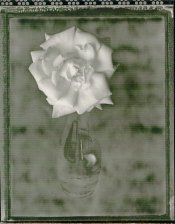Alex Hawley
Member
I have been playing with Type 55 and the Sabattier effect today. No prints yet, the negs are still drying. I have searched both APUG, the LF Forum, Polaroid.com, and Google but have found scant detail on the process. So I took the simple route and held my Sunpak 333 flash unit above negatives and fired it at various power levels. I separated the prints and negs at about 20 seconds after starting development then fired the flash.
Just wondering if anyone has a more sophisticated technique they would be willing to share.
Just wondering if anyone has a more sophisticated technique they would be willing to share.















